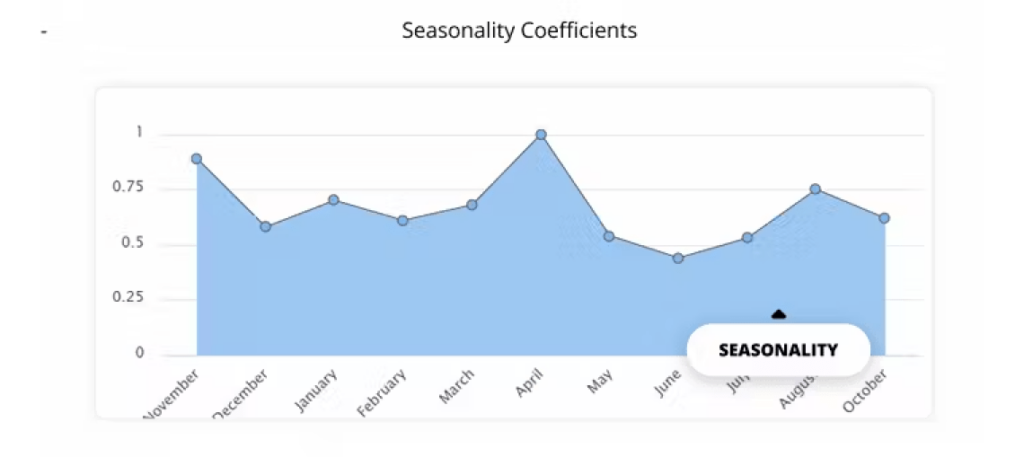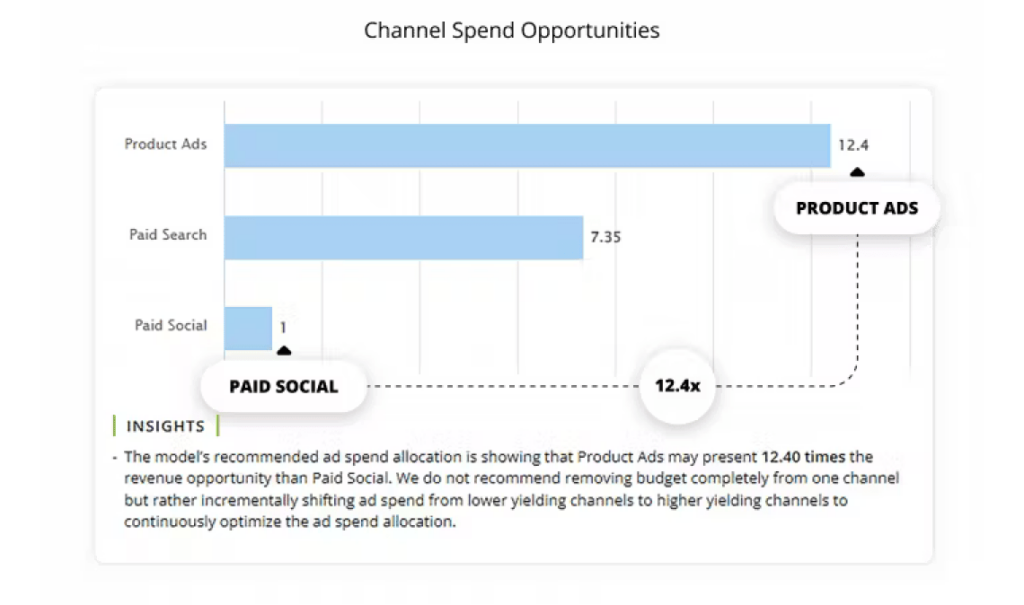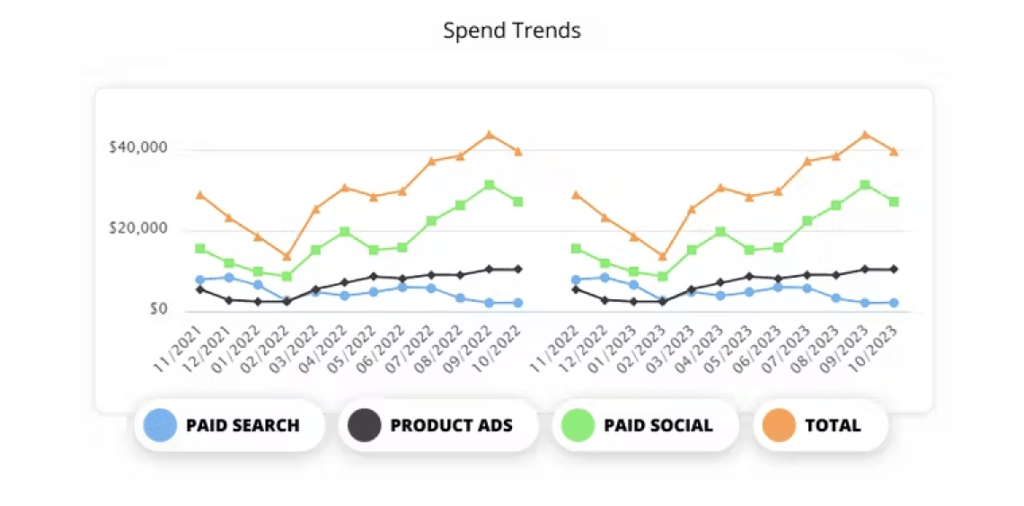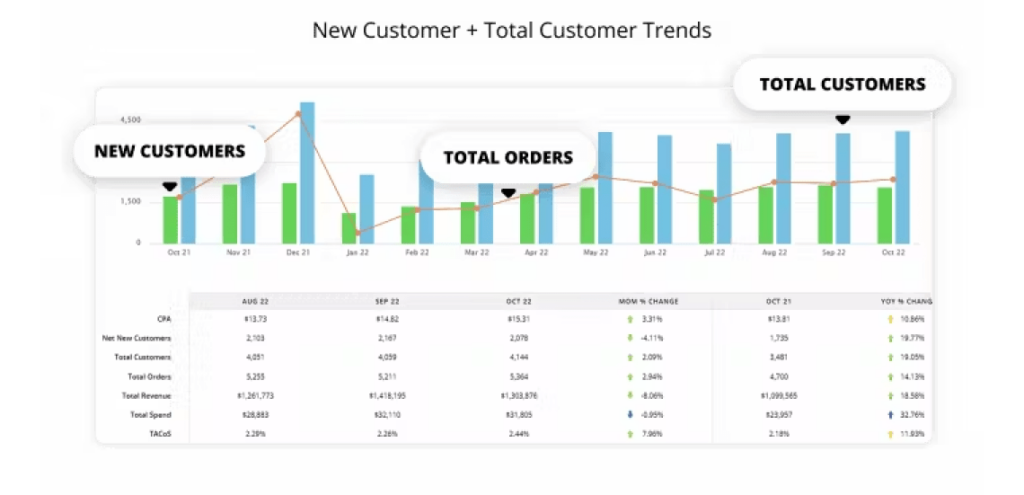
A lot goes into growing an ecommerce business, but the common denominator of success is data-driven decision-making. Unfortunately, many brands do not have the time, resources, or experience required to collect and analyze pivotal data, then turn it into an actionable strategy.
We, at Agital, have poured a lot of blood, sweat, and tears into making data-driven decision-making accessible. Our proprietary Agital Inform technology platform is not just a repository of our clients’ cross-channel performance data; it’s also an advanced, enterprise-level modeling tool designed to help businesses with:
In this blog, we’ll outline the importance of these capabilities and how Agital’s Inform platform makes them accessible our clients, regardless of size and budget.
If someone were to offer up a crystal ball to see into the future of your business, you’d jump at the chance to see it. While crystal balls don’t exist, forecasting tools can do the trick.
The biggest benefit of smart forecasting is that it allows your company to be proactive instead of reactive. It helps to set goals, create budgets, anticipate cash flow, and recognize changes within the market.
Here is what Agital’s forecasting tools enable you to glean insights into:




Much to our chagrin, marketing budgets are limited, so brands are constantly challenged to use the budgets at their disposal in the most efficient way that delivers the biggest impact. Tackling this challenge without expensive custom modeling tools that take time and resources to configure is a tall order for businesses that have to prioritize immediate growth. To make it easy, we built a number of budget optimization functionalities into Agital Inform.
First, it provides channel-specific campaign performance and optimization recommendations, informed by individual channel metrics, dashboards, and proprietary data interpretation.
This type of information is incredibly valuable, but it is still limited to a single-channel view of performance. What brands require to truly impact performance is a view of the big picture; a way to figure out how ALL of their marketing campaigns work together and contribute to overall business goals. Having this holistic view of performance enables brands to answer essential questions like what channels and campaigns they should invest more into and what should they cut back to achieve their business objectives. Put simply, brands need to answer the question:
“What is the optimal channel mix for my business, and how much money will I make if I spend X amount of dollars on it?”
That’s where media mix modeling (MMM) comes in.
MMM is an analytics and predictive modeling technique that enables marketers to measure how much each of their different channels contributes to their overall performance goals. The insights obtained from MMM allow marketers to refine their campaigns and budgets to create the ideal marketing mix. Because of the value delivered by MMM, such tools often cost thousands of dollars a month and require a data scientist on staff. At Agital, we wanted to make this functionality accessible to all, so we built a proprietary MMM tool into our Agital Inform. Here are some of the things our MMM tool can help brands assess:
Will increasing spend in paid search campaigns over social ones impact sales? How about adjusting spend on product ads? This functionality enables you to experiment with different ad spend allocation across channels to see how it will impact future revenue.

Media mix modeling (MMM) enables brands to understand performance history and look through the lens of future revenue with and without channel optimization. This functionality shows you revenue forecasts based on your current ad spend as well as your future, optimized ad spend.

MMM allows you to put an end to spending on gut feelings and know for sure which channel mix and budget allocation produce the highest revenue. A Channel Spend Opportunities breakdown will use advanced modeling to show how much you’re getting in return for every dollar spent in a particular channel. The example below shows that—for this brand—every dollar spent in Product Ads generates $12.4, every dollar spend on Paid Search drives $7.35 and every dollar spent on social has the same $1-return. Based on this data, a brand might consider a shift in budget from social toward product ads.

MMM can help you identify if and when to move budgets to better-performing channels. Having detailed breakdowns of your spend across channels in one place means you won’t lose sight of your full advertising mix and can understand how everything is trending at a glance.

While media mix modeling can sound like a complicated concept, it can also be surprisingly simple to implement. Take a look at this media mix modeling case study to learn how this fashion retailer increased sales by 40% without increasing ad spend.
There are a lot of ways we can look at customer acquisition, but at the center of it all is customer lifetime value (CLV). If you do not have a way to measure the lifetime value of the customers you have or are trying to acquire, your strategy is missing its most critical component. That component alone can define your revenue, budgets, channel strategies, goals, and profitability.
All ecommerce businesses should know their customer lifetime value and look to optimize it. CLV is essential in measuring customer loyalty as well as the long-term financial viability of your business.
CLV is instrumental in:
Below are some of the key CLV metrics and functionalities (all conveniently available in Agital Inform) that brands can use to better understand the value of their customers and make strategic decisions accordingly.
Key CLV Metrics: Instantly view the key metrics associated with CLV and compare them over time to assess the health of your business, make accurate revenue projections, and define performance.

CLV Cohorts: Access the CLV data from different customer cohorts. This information can be used to adjust future strategy—for example, the data below shows us that customers acquired in April drive a higher CLV than average. This could mean a higher ad budget and a more aggressive ad strategy in April. Or, you may investigate why customers acquired in April had a higher CLV in the first place, finding out, for example, that a certain sub-set of products drove increased sales during that month and that those products generated repeat customers at better rates. With this knowledge in hand, you can loosen your target CPA for those products knowing they have a higher associated LTV.

Changes Over Time: See how your CLV changes over time to help you develop effective retention and upsell strategies for each of your customer segments.

CPA Goal Setting: Use CLV data and margin data to help set informed cost per acquisition targets, identify break-even points, and build toward increased profitability.

New Customer + Total Customer Trends: Track how many total customers you acquire in a given timeframe, how many of them are new vs returning, and the revenue contributed by each segment. This data will give you true insight into your most valuable customers and help you define more effective strategies to attract and nurture them.

At Agital, we want our clients to have access to tools that deliver accurate forecasting, help with smart budget allocation, and measure customer lifetime value without having to invest thousands of dollars every month to get actionable insights. We are thrilled to introduce such advanced, enterprise-level capabilities into our Agital Inform platform.
